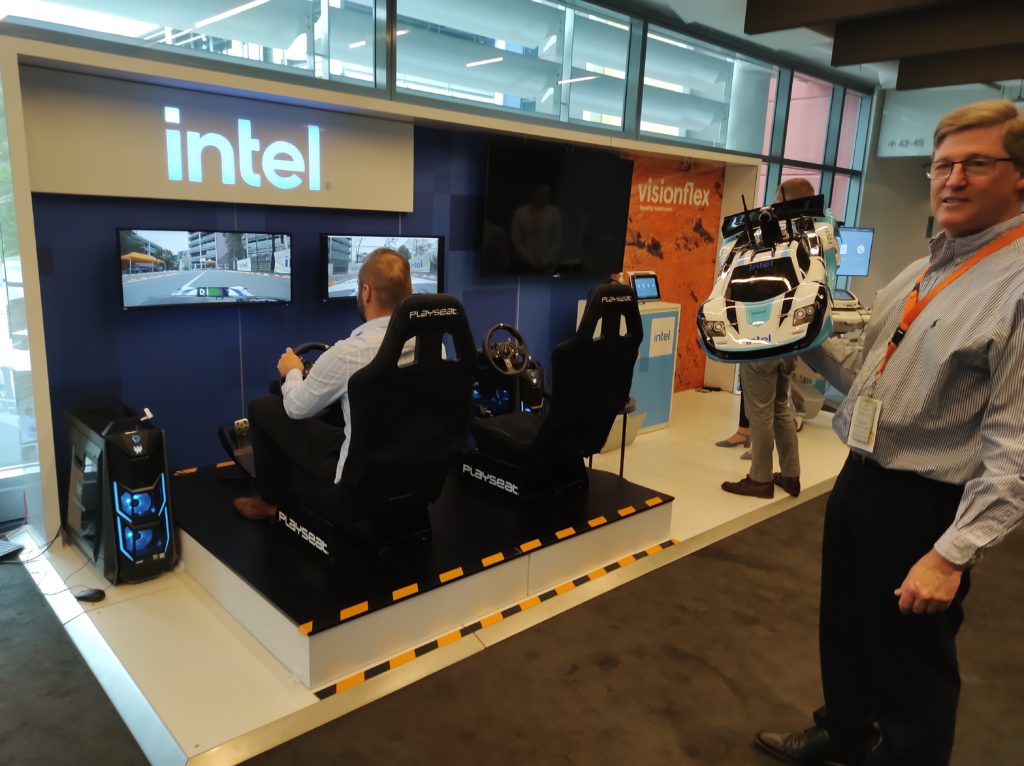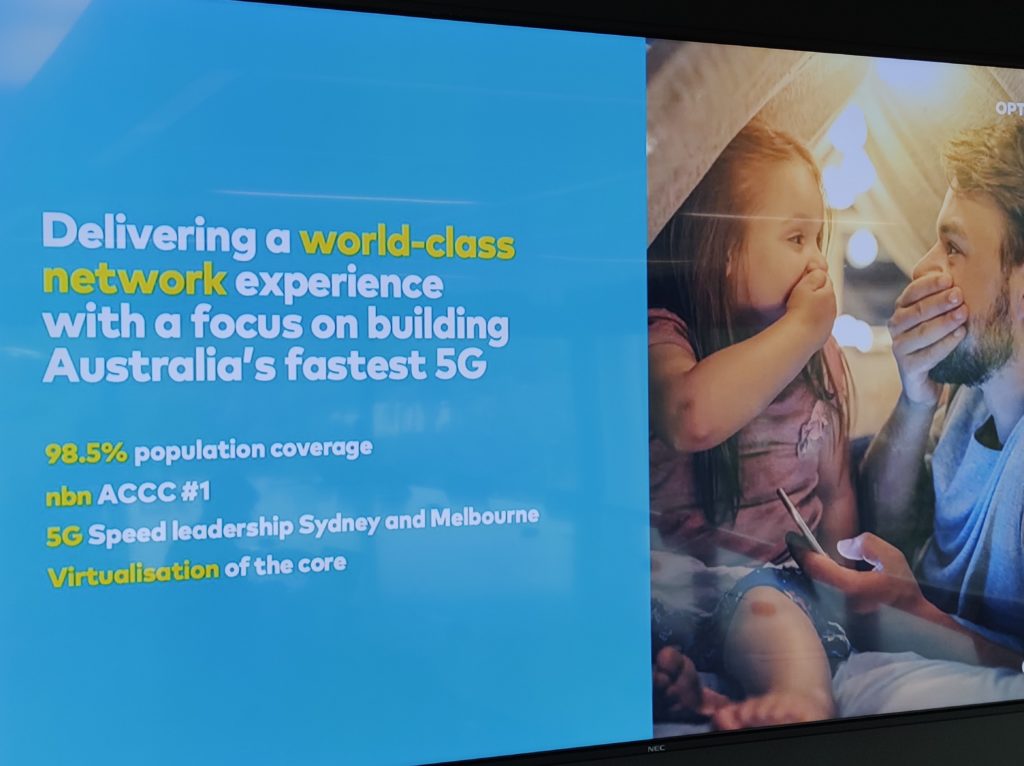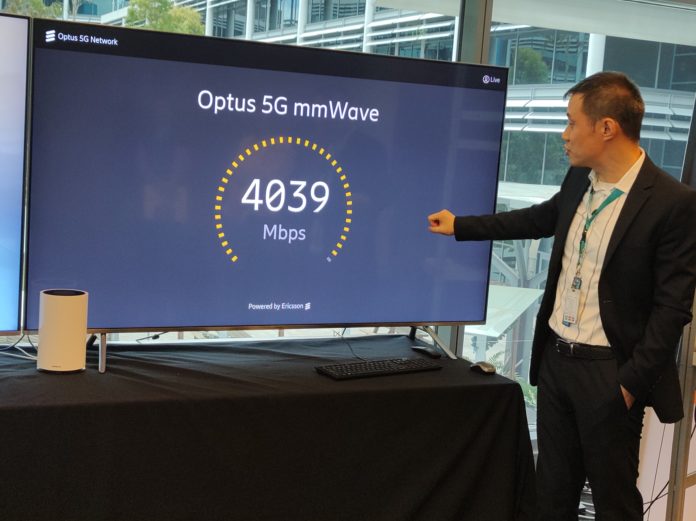This week Optus demonstrated several ways it thinks 5G mmWave might enable new uses for mobile networks. 5G mmWave is a much faster slice of spectrum that the federal government will auction off in early 2021. Optus’ demonstration was done under a scientific licence to test using this spectrum on a small scale.
Of course at a 5G media event there was the obligatory 5G live speed test on a big screen. The results keep getting faster but readers should be aware that of course all the Optus and Telstra 5G speed tests are with one device accessing the tower, which is totally different to eventual real world performance with many devices using a tower.

During the first demo I put on a Microsoft Hololens and used a special pen to be able to pickup, drop and move shapes while feeling haptic feedback and seeing the results live with practically no latency on my Hololens screen.
Optus said that next generation SA (standalone) 5G Network slicing can ensure that critical tactile services are given top priority in the network, even during times of congestion. This suggests that their 5G product will have different Quality of Service (QoS) levels for different types of customers.

Then we watched an Intel/Optus demo where a small car with a camera mounted on top was controlled completely over 5G with vision streamed over 5G back to us in the viewing area. This use case requires very low latency (to ensure car control is seamless and responsive) and high bandwidth, to ensure video can be streamed smoothly back at base
Interestingly one car sat to the side, it had been damaged by a previous test driver. Low latency car control is great but this proves as researchers have shown in the past that roads won’t be safe until they’re fully controlled by AI and humans just sit in the seats inside.

A potential future health examination & diagnosis scenario was then demonstrated by Optus partner visionflex. This demonstration shows a remote health examination on a dummy patient over a 5G network featuring the ProEX telehealth hub made for remote healthcare.
This use case requires very low latency (to provide responsive, real time communication between a doctor in a central location and another in a remote location) and high bandwidth, to ensure that high quality video can be streamed smoothly back to a central doctor’s base.
It’s not just about video and sound, the telehealth hub also had various instruments attached eg: a pulse oximeter (noninvasive and painless test that measures your oxygen saturation level), whose results were sent to the remote doctor for analysis.
Again network slicing will ensure that health services are given top priority in the network, even during times of congestion.
Will 5G end up being used for all these purposes? Who knows what is commercially viable and of course the example use cases all need a 5G tower very nearby. For this to work the network rollout will have to pickup pace to fill in the holes in the coverage map.









just give fibre optic GPON 4gbps to residents
what a waste of money while fibre exist already and can give 1 terabit from now
newzealand fibre started offering 2000/2000 and 4000/4000 and 10000/10000 plans
the 2gbps and 4gbps plans under 200 dollars a month
this is a joke for trying to use 5G while fibre can do it already